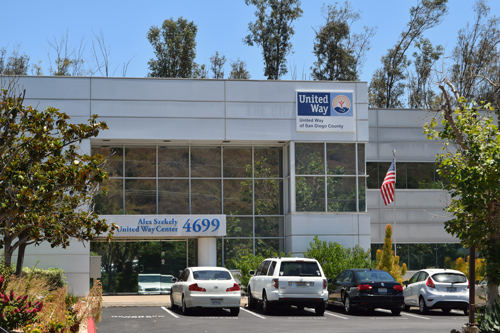
Story by Donald H. Harrison; photos by Shor M. Masori


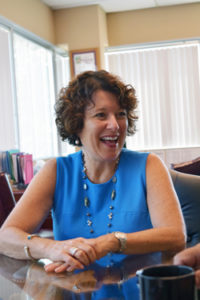
SAN DIEGO – Rabbi Laurie Coskey takes it as an article of her civic faith that “until third grade children learn to read, and after third grade they read to learn.” If a child doesn’t read by the end of third grade, the rabbi cautioned, that child is four times less likely to graduate from high school.
Today, as the President and CEO of the United Way of San Diego County – she became in 2016 the first woman to be appointed to that position in the 97 years since the organization’s founding – Coskey wants to make certain that the community is doing everything possible to help little children to become readers.
During an interview at United Way’s headquarters in Kearny Mesa, the rabbi outlined two programs designed to improve the chances of elementary school students to go the educational distance.
One program involves removing obstacles to their attendance at school. The other is an extensive summer reading program that has grown from a pilot 40 students last year to 400 students this year.
Two years ago, United Way “had a deep conversation with the community (in the City Heights section of San Diego),” asking what needs to be done for children. “What we found was that there were kids who were chronically absent more than 18 days a school year, little kids in elementary school, kindergarten through 3rd grade,” Coskey said. “We know if those children are absent it is not because they are cutting school or going out to lunch with their friends. They’re absent because there are things getting in the way of them going to school.”
In a pilot program, interns were assigned to two schools in the City Heights neighborhood to follow up on students who were excessively absent. Some of the problems they discovered were a parent needing to take too many buses to get the child to school on time; a parent needing to go to county office buildings to sign up for Cal Fresh (Food Stamps) and not having anyone to get the children to school. Additionally, said Coskey, “there was a parent who didn’t send her child to school because that child had worn the same clothes three days in a row, and the parent could only afford food or laundry. There wasn’t the choice to do both in the home. The parent was afraid that if she sent the child to school, the teacher would realize that the child was in dirty clothes and call Child Protective Services and so the parent kept the child home from school.
“Once we started talking to the parents we were able to intervene and get them vouchers for transportation, housing, laundry assistance –whatever it was that was blocking the child from getting to school.”
The following year, United Way had the program in seven schools and in the coming school year, “we will be in 14 schools, four of them in the City of Lemon Grove, and we will saturate the Hoover High School cluster of City Heights.”
City Heights is an area of San Diego where immigrant and refugee families from many nations reside. Coskey said as a result of the program, which is carried out with cooperating agencies of the City Heights Partnership for Children, pupils who had missed an average of 18 days schooling reduced that figure by approximately 10 days. That, said Coskey, is “an extraordinary result” because school districts consider even a 2 percent increase in attendance huge because of the additional revenues they receive based on average daily attendance. “Our program showed a 5 percent increase.”
The summer reading program, which is currently underway, always needs volunteers to read to elementary school children at four sites: the Copley YMCA, the Community Development Program in City Heights; Cherokee Heights Elementary School and Hamilton Elementary School. Teachers supervise the programs at the two elementary schools, while counselors are in charge of the other programs.
Last year, children were tested before and after the program. The results showed that all of them had at the very least maintained their current reading levels, while others improved. This was a good result, according to Coskey, because typically elementary students experience what is called the “summer slide,” which is a diminishment of their reading ability.
The 400 volunteers were needed for three hours of volunteering, to read to small groups, to big groups, and to participate in STEM (science, technology, engineering, and math) and art activities, Coskey said. “We believe that everyone can be a philanthropist, and that doesn’t mean just money – though of course we love financial donations. Philanthropy also means love for humanity, so we have volunteer activities for people to help children.” To volunteer, call the United Way at (858) 492-2000.
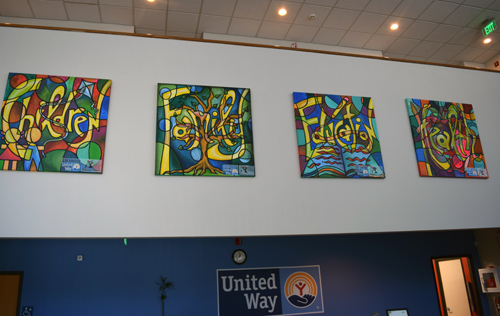
A third educational initiative of the United Way is aimed at students in middle schools and high schools. It has brought together 15 school districts and 5 community college districts “to create career pathways for students” and provide them with “hands-on learning experiences,” according to Coskey.
Coskey said thousands of businesses will participate at different levels of commitment to provide students with experiences with the business world. It may be someone from a company talking to a class about what they do, or having a class visit their facility, or hiring students as interns.
“We started in three areas: advanced manufacturing, clean tech and high tech,” Coskey said. “But we are broadening it now,” said the rabbi. “A student in algebra in an East County high school can go to Taylor Guitars and see that unless they understand algebra, they cannot build a guitar because of the way the frets and the strings are. They see what they learn in their class is actually relevant to what they might do.”
Before being selected as the President and CEO of the United Way, Coskey had served as exectutive director of the Interfaith Center for Worker Justice, and before that she was a pulpit rabbi at Congregation Beth Israel.
She said that she doesn’t consider each of these separate careers, but rather steps along a continuum. “From the time I was in rabbinical school, I was really turned towards tikkun olam (repair of the world) or a tzedakah (justice/ helping others) focus for my rabbinate,” she said. “Even in rabbinical school, I helped create a program where we brought food and shared it, and when I got to Beth Israel (as an assistant rabbi), we did the same thing with the Hunger Project. When I finished my doctorate in 2000, I believed that transformative change was really essential both for alleviating living in poverty and the ancillary issues around being poor in San Diego County. So I turned outward in that way, and became sort of a rabbi to the city. I got involved in the politics of the city through appointments (today she sits on the Convention Center’s board of directors) and otherwise and did the economic justice work for 13 years. All of the workers for whom I advocated those years had kids, and I watched those kids grow up without opportunity. When this job came open and somebody said to me do you want to make a difference for kids in San Diego County, I said ‘yes! This is something I want to apply for.’”
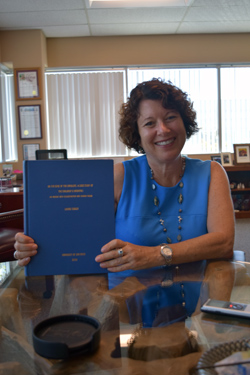
It was probably to Coskey’s great benefit that the dissertation that she had completed in 2000 for a doctorate in education at the University of San Diego had been based in large part on her in-depth study of the United Way. The dissertation carried the formidable title of “On the Edge of the Envelope: A Case Study of the Children’s Initiative: An Inquiry into Collaboration and Shared Vision.”
The United Way today is in the continuing process of implementing some of the goals that Coskey had studied in depth as an Ed.D candidate.
Only since 2014 has the United Way been a programmatic institution. Before that, it largely had been an agency that collected money from the community and then parceled it out to other non-profits. At one time in its history it had been known as the Community Chest.
Each of the United Way organizations in the country chooses its own mission. For example, whereas United Way of San Diego County has decided to focus on education, the United Way of Los Angeles specializes in alleviating homelessness.
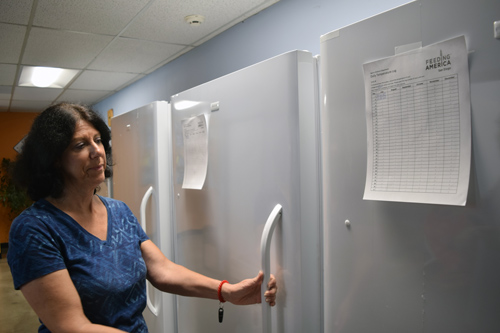
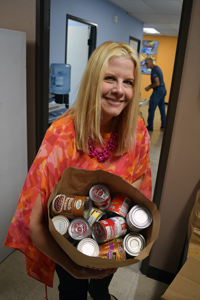
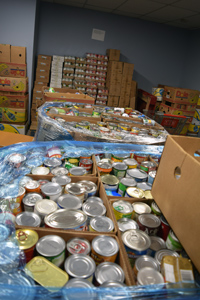
There are some pre-existing programs that continue at the United Way of San Diego County, among them a food pantry, which receives provisions and assistance from a variety of sources including schools, the federal government, and labor unions. Ruby Solomon Featherly, director of that program, said it is all part of a single fabric. “By feeding the kids, we make sure they can go to school and concentrate.”
Ralph’s Grocery contributes such items as sweets, breads, crackers, meats, dairy, sandwiches and salads, and San Diego City Schools provides unused items from their breakfast and lunch programs, such as frozen waffles, burritos, teriyaki chicken and rice, and orange chicken and rice, according to Featherly.
Another large supplier of food for the pantry are U.S. postal workers who annually conduct a letter carrier drive, in which they pick up food left at mailboxes. Last year, according to Featherly, letter carriers collected 150,000 pounds of food. There is also a grant from Kellogg’s, the cereal manufacturer.
Recipients of the food are referred by their labor unions or by the 2-1-1 informational referral service, or by doctors or family members, and can take home from 8 to 10 packed bags of food, which is “usually enough food for a family of four for a week or two.”
Featherly said 2,300 families, averaging 4 to 6 members, were enrolled in the program last year.
Besides food assistance, United Way will help families with other kinds of needs including rent, mortgage, and utility assistance, and funeral and other expenses that are not the norm, according o Featherly.
*
Harrison is editor and Masori is a staff photographer of San Diego Jewish World. They may be contacted respectively via donald.harrison@sdjewishworld.com and shor.masori@sdjewishworld.com